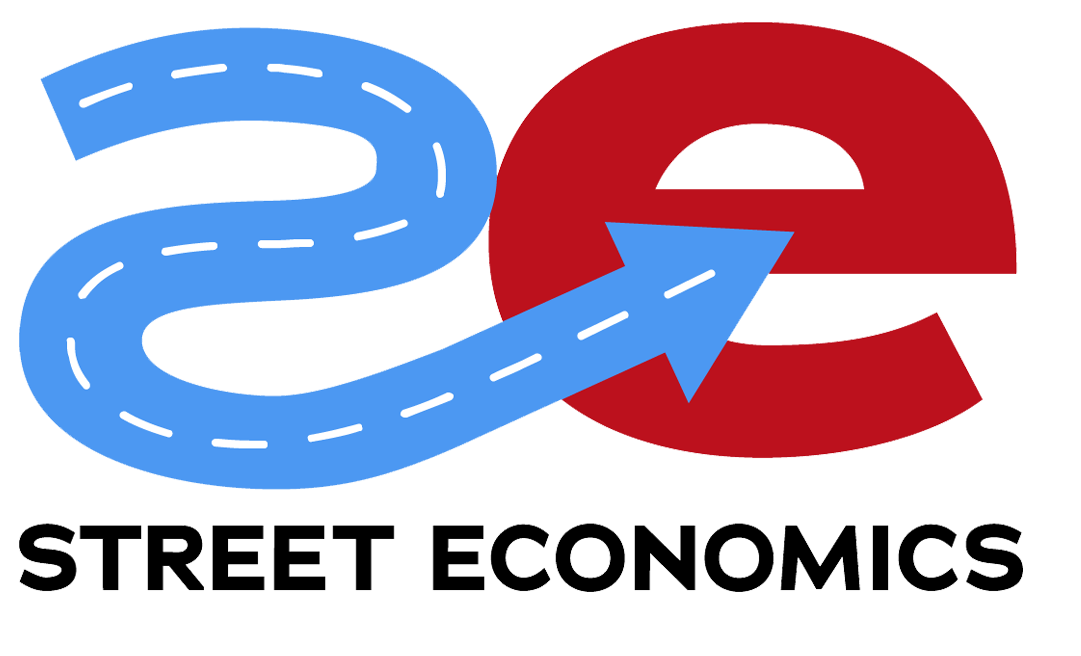Good morning, rollercoaster riders. Time to refill your coffee and strap in. This daily economic intelligence briefing is brewed especially for city leaders tired of stale playbooks, bureaucratic runarounds, and yesterday’s warmed-over ideas. No spin, no fluff; we’re serving it fresh, clear, and actionable, so you can stay ahead of the game today.
OPEC Opens the Taps, Oil Prices Sink
Well, well, look who decided to be generous. OPEC and friends abruptly cranked up oil production, catching markets off guard and sending crude prices into a nosedive. After months of grumbling about high energy costs (and some not-so-subtle nudging from Washington), the cartel flooded the market with Black Gold… Texas Tea. Drivers and trucking companies are cheering at the pumps, while oil execs are popping antacids. Enjoy the cheaper gas while it lasts, we all know this oil party could end as quickly as it began.
Why This Matters: Cheaper fuel is like a mini stimulus for your community – city vehicles cost less to fill, and your residents have a few extra bucks to spend on Main Street instead of at gas stations. It’s a welcome break for transit fleets and anyone budgeting for garbage truck diesel. But don’t get too comfy: if your local economy rides on oil revenues or jobs (we’re watching you, Texas and North Dakota), this price plunge is more trick than treat. Lower oil prices can mean budget shortfalls in energy towns and layoffs in the oilfields. For everyone else, take the temporary relief, maybe fix that hole in the budget, but keep an eye on the horizon. OPEC has a habit of changing its mind, and today’s price relief could be tomorrow’s price spike, so stay flexible and plan for volatility in the fuel and energy forecasts.
Mortgage Rates Hit the Roof, Housing Hits the Brakes
If you want another rollercoaster, check out the housing market. Thanks to sky-high bond yields, mortgage rates have shot up faster than a bottle rocket on the Fourth of July. We’re talking the highest home loan rates in decades, and surprise – homebuyers are tapping the brakes. Real estate agents are swapping their rosy sales glasses for anxiety meds as bidding wars evaporate. Construction of new homes is slowing to a crawl because builders aren’t keen on putting up houses that nobody can afford to finance. The era of essentially free money is over, and the housing sector just got a reality check.
Why This Matters: Cities addicted to property taxes and development fees, listen up. When mortgages become expensive, fewer people buy homes, meaning fewer sales, stalled developments, and potentially flatlining property values. Translation: your expected property tax windfall might shrink, and that big condo project you were banking on could pause or downsized. Time to revisit those revenue projections and make sure your budget can handle a housing cooldown. Also, a slower market isn’t all doom and gloom – it’s a golden chance to push for affordable and workforce housing or convert empty luxury apartments into something real people can actually live in. If prices stop skyrocketing, your local workforce might finally catch a break in the rent department. City leaders should seize this moment to recalibrate housing plans: streamline permits for conversion projects, consider incentives for first-time buyers, brace for a period where housing hustle isn’t propping up your economy like it used to, and streamline permits again. The boom times might be taking a breather, so adjust accordingly.
Federal Deficit Explodes, Cities Brace for Fallout
In Washington, the money printers have been working overtime, and yet Uncle Sam’s wallet is emptier than a tourist town in offseason. New federal data shows the U.S. budget deficit ballooning to eye-watering levels. We’re running trillion-dollar shortfalls as if that’s normal, and while D.C. debates who’s to blame, one thing is certain: the feds are strapped for cash. Why should you care? Because all that red ink isn’t just a number on Capitol Hill, it’s a giant flashing warning sign for anyone expecting federal funding for, well, anything. Between trade-war turmoil hitting tax revenues and higher interest payments on the national debt, the federal coffers are under pressure. The days of big federal handouts could be on pause (or gone for a while), even as needs mount.
Why This Matters: Don’t bank on bailouts. Cities often rely on federal dollars for infrastructure, disaster relief, affordable housing, you name it, but when Washington is drowning in debt, those lifelines might get thinner. Expect tougher competition and strings attached for any grants still up for grabs. That dream library expansion or transit upgrade grant? You might be waiting longer or ponying up more local money to get it done. Plus, massive federal borrowing tends to keep interest rates high, which means when your city wants to issue bonds for that new water plant or stadium, you’ll pay more in interest. Higher borrowing costs can squeeze local budgets hard. Now is the time to build your rainy-day funds and identify Plan B (state funds? public-private partnerships?) for critical projects. And maybe hold off on any non-essential spending that counted on that “free” federal money. The bottom line: Washington’s fiscal drama will trickle down to Main Street; prudent city leaders should prep for leaner times and make sure they can stand on their own two feet if Uncle Sam tightens the purse strings.
King Dollar Loses Some Swagger
The U.S. dollar, that swaggering king of currencies, has a little bit of a mid-life crisis. After years of flexing its muscles as the world’s favorite currency, the greenback is suddenly looking… well, a little less invincible. Trade war turmoil and global jitters have knocked the dollar down a peg. Foreign currencies (euro, yen, you name it) are gaining ground, and talk of “alternatives to the dollar” is no longer just late-night economist chatter. It turns out when you batter the world economy with long overdue tariffs and uncertainty, even your own currency starts to sweat. Allies and rivals alike are watching the dollar’s slide and wondering if the once unshakeable king might actually stumble (spoiler alert: it won’t). No, the dollar isn’t dead, not by a long shot, but for the moment it isn’t wearing the seemingly untouchable crown it used to.
Why This Matters: Currency swings aren’t just for Wall Street, they hit home for cities, too. A weaker dollar means imported goods get pricier. That new fleet of imported electric buses or those construction materials sourced from abroad? They just got more expensive, which can blow up local project budgets. City procurement officers will need to keep a keen eye on exchange rates now (sorry, folks, another thing to worry about). On the flip side, if your city relies on export-oriented industries or attracts international tourists, a sagging dollar can actually give you a short-term boost: U.S. products become cheaper overseas and your city suddenly looks like a bargain vacation. Hello, foreign visitors and your spending! But don’t break out the party hats yet. The overall picture of the dollar losing clout is a long-term concern to some: if global investors start doubting U.S. stability, it could push up borrowing costs and make financial markets jumpier. For city pension funds and investments, that’s not great news either. The takeaway? Keep an eye on the dollar’s health. It’s easy to ignore exchange rates when the dollar is king, but now that it’s wobbling, even if temporary, smart local officials will factor in currency risk to their economic plans. Whether it’s budgeting for costlier equipment or seizing an opportunity to lure tourists, currency moves are yet another curveball in your playbook. Don’t get caught flat-footed.
Tariffs Actually Bringing Manufacturing Back, Go Figure
In a plot twist no one saw coming (except maybe that one contrarian in the back of the council chambers), the trade tariff chaos is nudging some manufacturers to reconsider the “Made in Anywhere-But-Here” strategy. Big tech and industrial players are quietly (and not so quietly) announcing plans to build stuff in the USA again (except Apple of course). Imagine that; years of polite pleading didn’t do it, but a few rounds of brutal tariffs and supply chain nightmares have some companies feeling nostalgic for American factories (except Apple). Case in point: major chip makers and electronics firms are expanding U.S. production plans, spurred by both the tariff pain and hefty government incentives for domestic manufacturing. It’s not exactly a full-on factory renaissance yet, but there’s movement. Tariffs are a blunt instrument, and they’ve whacked CEOs on the head hard enough that “reshoring” is suddenly in style. Call it patriotism, call it self-preservation, but either way, some long-lost industrial jobs might finally find their way back home.
Why This Matters: For cities, this is a potential silver lining in the trade-war storm. Those headlines about new factories and expanded plants in the U.S. mean opportunity for communities that have the workforce and business-friendly climate to snag them. City leaders should be gearing up: get your economic development teams on the phone, identify sites that could host a new manufacturing facility, and streamline your permitting process to be factory-ready. If a tech giant or auto supplier is looking to onshore operations, you want your town on their shortlist. This is the moment to market your reliable infrastructure (power, water, broadband) and highlight local training programs or community colleges that can supply skilled workers. And don’t forget to review those incentive packages; you’ll need a smart mix of carrots (tax breaks, fast permits, and even faster permits) without giving away the farm. The return of manufacturing could diversify your economy and bring solid middle-class jobs back to town. After decades of watching plants close and jobs shipped overseas, you might finally cut a ribbon on a new facility instead of a shutdown. Seize the moment, but do it wisely: ensure any deals actually benefit your community in the long run (no white elephant factories, please). In short, be ready to catch this manufacturing boomerang, it’s coming in hot.
Ready for Some Street Smarts?
Look, nobody likes being blindsided by economic surprises, and that’s exactly why we built Street Economics®. Think of it as your city’s personal economic radar, scanning everything from real estate trends and job numbers to foot traffic and beyond. We serve up daily intel that’s hot, fresh, and laser-focused on what’s happening on your streets (not just Wall Street). It’s like a weather forecast for your local economy, except we actually get it right.
Give your community the competitive edge it deserves. Make better decisions before issues become crises. Sound good? Then head over to streeteconomics.ai and see how Street Economics® can help you take control of your city’s economic future – no crystal ball required.



Comments are closed